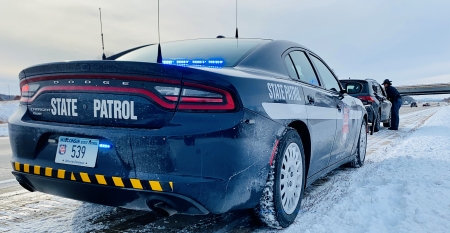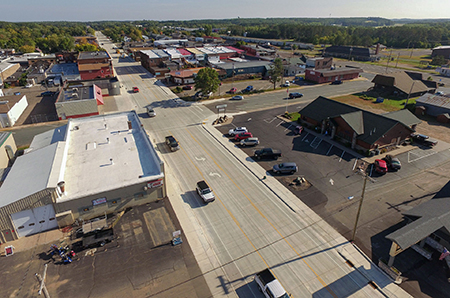Speed Limits |
Speed Limit Types |
Establishing Limits |
Safety and Enforcement |
Frequently Asked Questions | References and Resources |
Contacts
 Law enforcement and engineering practices each play important roles in speed management. Tickets, fines and penalties can be deterrents, but also planning, design, and engineering can help manage roadway speeds and driver expectations. Roadway environment plays a critical role in establishing appropriate speed limits. Building setbacks, presence of sidewalks, significant accesses/driveways, medians, trees and other features all influence a driver's speed.
Law enforcement and engineering practices each play important roles in speed management. Tickets, fines and penalties can be deterrents, but also planning, design, and engineering can help manage roadway speeds and driver expectations. Roadway environment plays a critical role in establishing appropriate speed limits. Building setbacks, presence of sidewalks, significant accesses/driveways, medians, trees and other features all influence a driver's speed.
Roadway improvement projects start with a design speed to guide decisions – such as how to design curves. Other characteristics such as setbacks, access restrictions and zoning are not established by road authorities. Roadways can be designed for lower speeds, but roadway environmental factors impact a motorist's behavior. Below are examples of how roadway design impacts motorist behavior:
In this scenario, a driver may expect a lower speed due to the design features, but they are less likely to respect the posted speed limit due to the surrounding characteristics of the environment.
In this scenario, a driver may respect the posted speed but expect a lower speed due to a perceived safety concern with congestion, vulnerable road user activity or due to the presence of buildings, storefronts and restaurants, which involve heavy traffic turning into and out of these developments.
 Questions to keep in mind for speed management principles include:
Questions to keep in mind for speed management principles include:
- What role does the roadway serve and how is the current environment influencing speeds?
- Who are the primary users of the roadway facility?
- Is there a need for additional features to better accommodate (or separate) the users of the roadway (e.g., installation of bicycle/pedestrian paths)?
- Can the roadway design be adjusted to reduce design speeds and promote slower travel speeds?
- Can speed management features be installed to promote slower speeds (e.g., removing lanes, narrowing lanes)?
Education of the traveling public is another key component to speed management. Agencies such as WisDOT have worked over the years to ensure the public
understands the consequences of speeding.
For additional detail on speed enforcement, traffic engineering or any of the information in this section, see the
Frequently Asked Questions page.